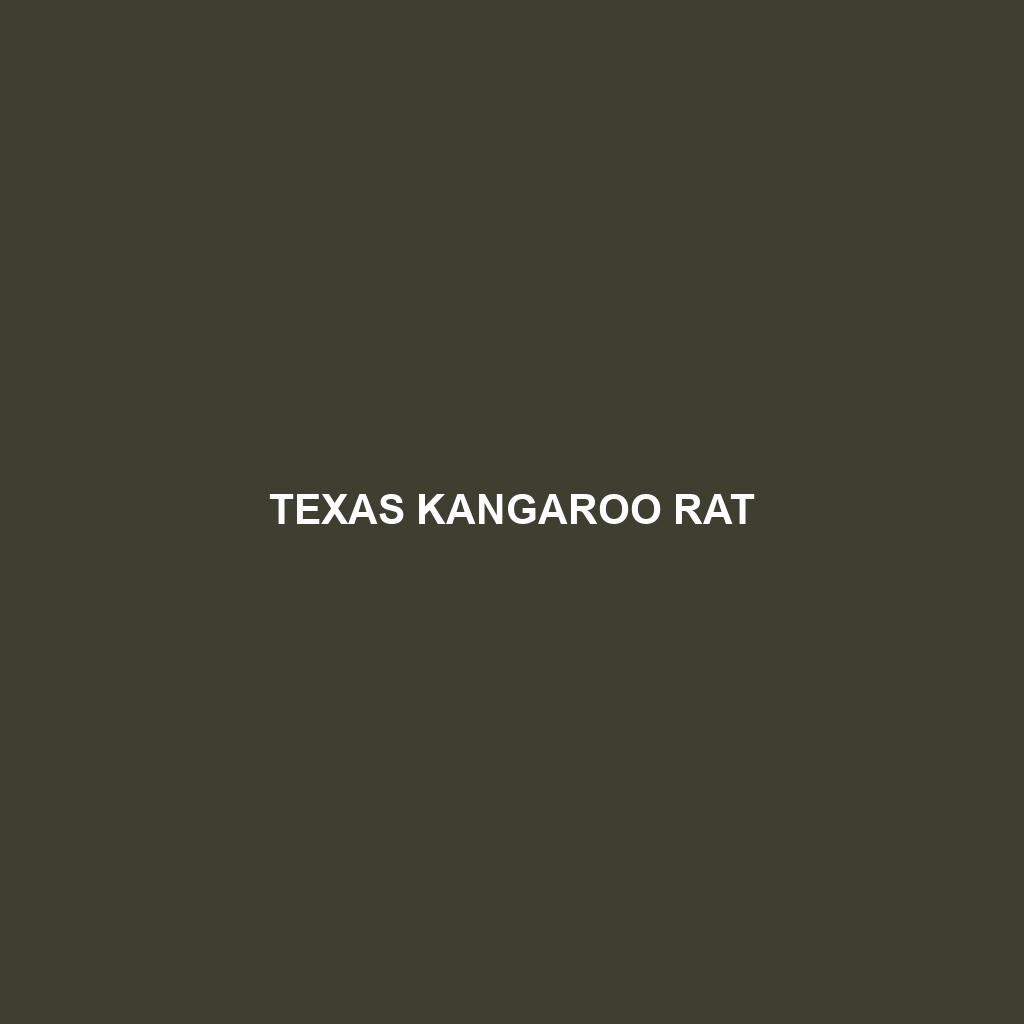San Quintin Kangaroo Rat (i)Dipodomys gravipes(/i)
Common Name: San Quintin Kangaroo Rat
Scientific Name: Dipodomys gravipes
Habitat
The San Quintin Kangaroo Rat is primarily found in the arid regions of Baja California, Mexico. This species inhabits coastal sand dunes and grasslands, which provide the essential habitat for its survival. These areas are characterized by their sandy soils and sparse vegetation, allowing the kangaroo rat to thrive in a low-water environment.
Physical Characteristics
This small rodent typically measures about 10 to 12 inches in length, including a long tail. The San Quintin Kangaroo Rat is notable for its soft, sandy-colored fur that helps it blend into its surroundings. Its large hind feet and short front limbs are adapted for exceptional jumping abilities. One distinctive feature is its tufted tail, which aids in balance while navigating its sandy habitat.
Behavior
San Quintin Kangaroo Rats are primarily nocturnal, emerging during the cooler hours of the night to forage and socialize. They exhibit fascinating behaviors such as jumping long distances to escape predators. These rodents are also known for their burrowing habits, creating complex underground homes that provide shelter from the harsh desert climate and predators.
Diet
The diet of the San Quintin Kangaroo Rat consists mainly of seeds, grains, and other plant materials. They have a unique feeding habit that allows them to store food in their cheek pouches for later consumption. This behavior is crucial for survival as it helps the species cope with food scarcity during drier seasons. They are particularly fond of seeds from various native plants found in their habitat.
Reproduction
San Quintin Kangaroo Rats typically breed in the spring and early summer months. After a gestation period of about 30 days, females give birth to a litter of usually 2 to 6 offspring. The young are born blind and hairless, relying on the mother for nourishment and protection until they mature and are able to fend for themselves.
Conservation Status
The San Quintin Kangaroo Rat is currently classified as endangered due to habitat loss from agricultural development and urbanization. Conservation efforts are crucial to protect their remaining natural habitats and ensure the survival of this unique species.
Interesting Facts
One fascinating fact about the San Quintin Kangaroo Rat is its remarkable ability to survive without drinking water. It extracts all the moisture it needs from the seeds it consumes, showcasing an adaptation to its arid habitat. Additionally, it has been known to exhibit social behaviors, including vocalizations that facilitate communication with one another.
Role in Ecosystem
The San Quintin Kangaroo Rat plays a vital role in its ecosystem as a seed disperser. By foraging on various plants, these rodents contribute to the germination of seeds, which supports plant diversity in their habitat. Furthermore, they serve as a food source for predators such as owls and snakes, making them an integral part of the food web in their environment.
